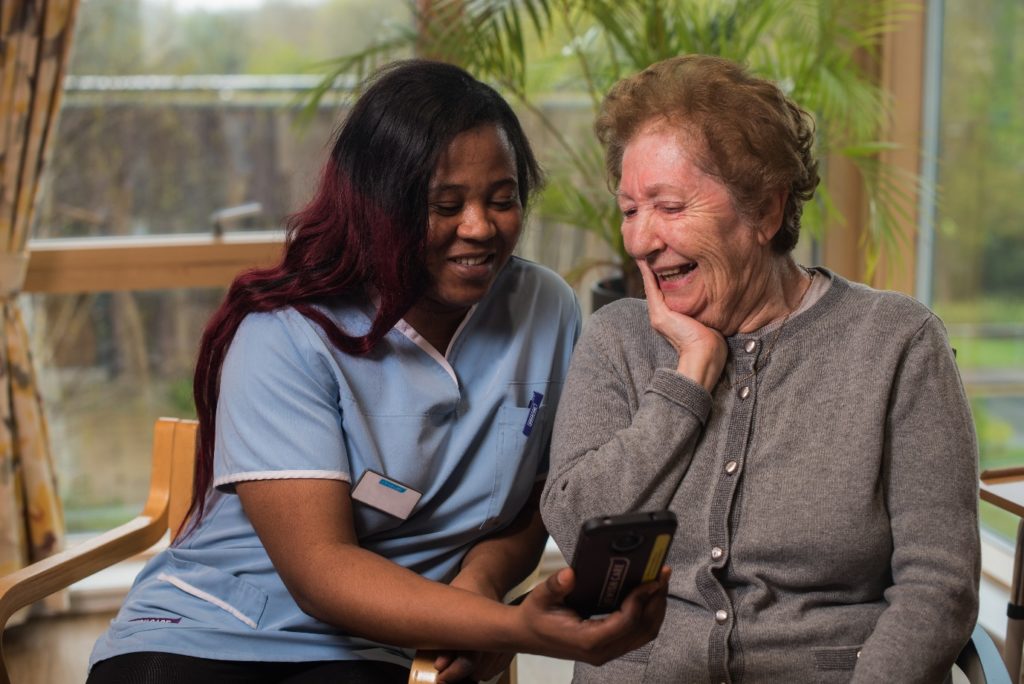
October 8th 2019
In 2016 Jewish Care, a care provider based in London and the South East, developed a digital strategy for their organisation. They decided that they would start a project to replace paper-based care plans with a care planning software system.
The overall aim of the project was to successfully implement electronic care plans in Jewish Care’s eleven care homes, as part of the organisation’s wider digital enhancement strategy. As a first step, Jewish Care went through a rigorous and extensive procurement process that involved frontline staff, volunteers, senior managers and trustees to decide which software supplier to use. Involving frontline staff got early buy-in from the principal users of the chosen scheme.
They then piloted the software across three homes in order to test the system, the training required and the roll out method. This also allowed them time to identify and resolve any challenges which they hadn’t anticipated in the planning stages and to adapt the software to Jewish Care’s requirements.
Key aims of the project
At the beginning of the process they identified three key project outcomes they hoped to achieve:
- Improve care delivery and customer experience, through better access to information at the point of care.
- Improve resource efficiency through improved use of staff resource, overheads and consumables.
- Increasing the digital capabilities of staff.
18 months after the implementation project began all eleven homes are now using the electronic care planning system. Paper care plans for all residents have been replaced by an electronic care plan and staff are using hand held devices to access care plans and to record all interactions and care delivered.
“I’m slower than my colleagues, but I really like the system and wouldn’t ever want to go back to paper. I never thought I’d say that – you know how scared I was!”
What were the challenges?
Once the roll out was complete, Jewish Care produced a report on how the project had gone in which they outlined the challenges they faced and how these were resolved.
|
Challenge |
Resolution |
|
|
|
|
|
|
What were the outcomes?
Jewish Care surveyed staff prior to the launch (n=59) and again at the end of the implementation (n=226) about how they felt about the project. The following are some of the highlights of the survey results:
- Positive CQC reports. The five homes that have been inspected since implementing the software have all received good comments on the quality of their records.
- Improvement in quality and quantity of records entered for residents. 93% of staff surveyed (n=226) reported that all or most of interactions with residents were recorded, compared to 53% prior to implementation.
- Greater ability to negotiate with Local Authorities. In a few cases, better records enabled Jewish Care to renegotiate fees when dependency and staff input exceeded level covered by the Local Authority.
- Better continuity of care. This was caused by improved communication between staff. 84% felt that their care records entries were read by others at every shift. Only 44% felt this prior to implementation.
- Better care and customer experience. 79% of staff reported feeling confident in knowing residents’ care needs, compared to 55% prior to implementation.
- More accurate records. As staff could record care in a timelier manner. Prior to implementation, almost 50% of staff reported that they were writing the care plans at the end of the shift. Post-implementation, 87% reported updating care plans throughout the shift and less than 5% at the end of the shift.
- More time to interact with residents. This was reported by more than 60% of participants.
- Better delivery of care. Over 90% of staff surveyed felt that use of electronic records enabled them to deliver better care. Prior to implementation, 34% hoped that this would be the case.
- Staff have improved confidence in using digital technology. This was reported by 43% of participants.
- Reduction in the use of consumables. Paper orders in the care homes reduced by 17% (some colour papers used primarily for care plans saw reductions of 80%). The use of plastic envelopes was reduced by 13%.
- Staff are more positive about using digital technology. This opens the way to introduce more technologies, in order to improve quality and efficiencies.
“I love it – it’s so much quicker than writing”
For Jewish Care, it is clear that introducing digital technology and training around 600 care staff to use it has opened the door to introducing further technology. They are now exploring the next steps in their digital journey.
Further information
If you would like to find out more details about this story, please contact:
- Ffion Roberts, Digital Implementation Manager: [email protected]
- Gaby Wills, Director of Care Services (Project Sponsor): [email protected]
More guidance on care planning software
Digital Social Care are working with care planning software suppliers and care providers to develop guidance on purchasing the right system for your organisation. If you would like to be involved in this work or would like any more details you can see this on our choosing software and equipment page.
View all case studies